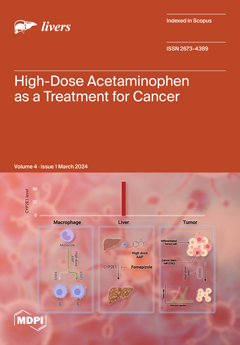The hepatokine leukocyte cell-derived chemotaxin-2 (LECT2) promotes insulin resistance and hepatic fibrogenesis. In rodents, acute exercise suppresses circulating LECT2; however, human data are lacking. This study compared circulating LECT2 across populations and explored whether acute exercise impacts circulating LECT2. In Part A (
[...] Read more.
The hepatokine leukocyte cell-derived chemotaxin-2 (LECT2) promotes insulin resistance and hepatic fibrogenesis. In rodents, acute exercise suppresses circulating LECT2; however, human data are lacking. This study compared circulating LECT2 across populations and explored whether acute exercise impacts circulating LECT2. In Part A (
n = 43), data were pooled from three experimental studies, regarding the following groups: healthy individuals, individuals with impaired glycaemic regulation (IGR), and individuals with type 2 diabetes and metabolic dysfunction-associated steatotic liver disease (T2DM-MASLD). Generalised linear models assessed differences in circulating LECT2 among groups. Part B (
n = 20) involved exercise (30 min, 65% peak oxygen uptake) and control (resting) trials in the healthy and IGR groups. Circulating LECT2 was measured before and at 0, 1, 2 and 3 h post-exercise. Generalised estimating equations assessed differences in LECT2 responses to the trials among groups. In Part A, circulating LECT2 levels were 28.7% and 37.3% higher in the IGR and T2DM-MASLD groups, vs. healthy individuals (
p ≤ 0.038), with BMI identified as the main predictor (
p = 0.008). In Part B, average circulating LECT2 levels were 6.3% higher after exercise vs. in the control (
p < 0.001), with similar responses between groups (
p = 0.829). In the combined cohort, circulating LECT2 levels were elevated 1–3 h after exercise vs. control (
p ≤ 0.009). LECT2 is elevated in people with dysglycaemia, with BMI as a leading predictor. Contrary to previous rodent work, acute exercise augments, rather than suppresses, circulating LECT2 in humans.
Full article





